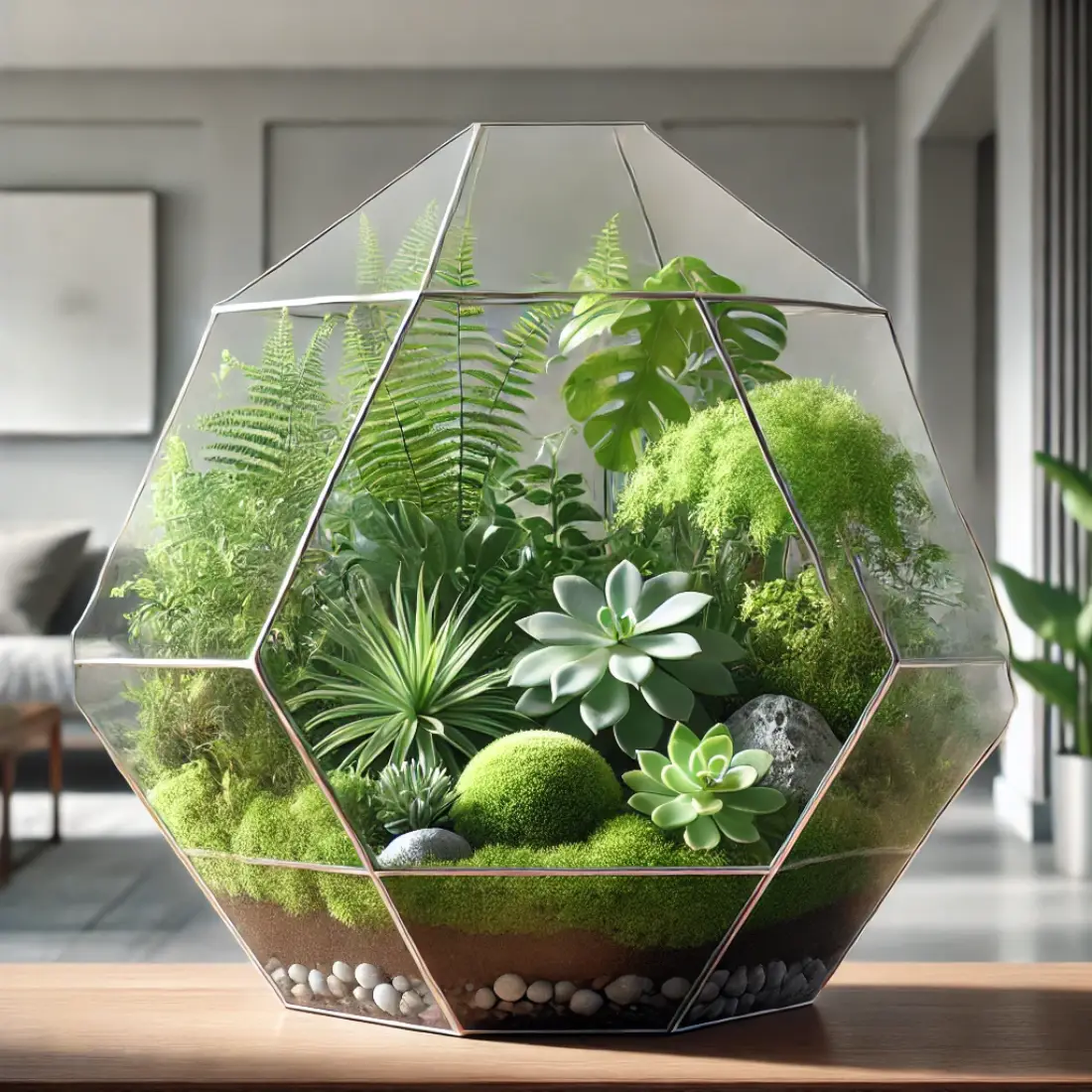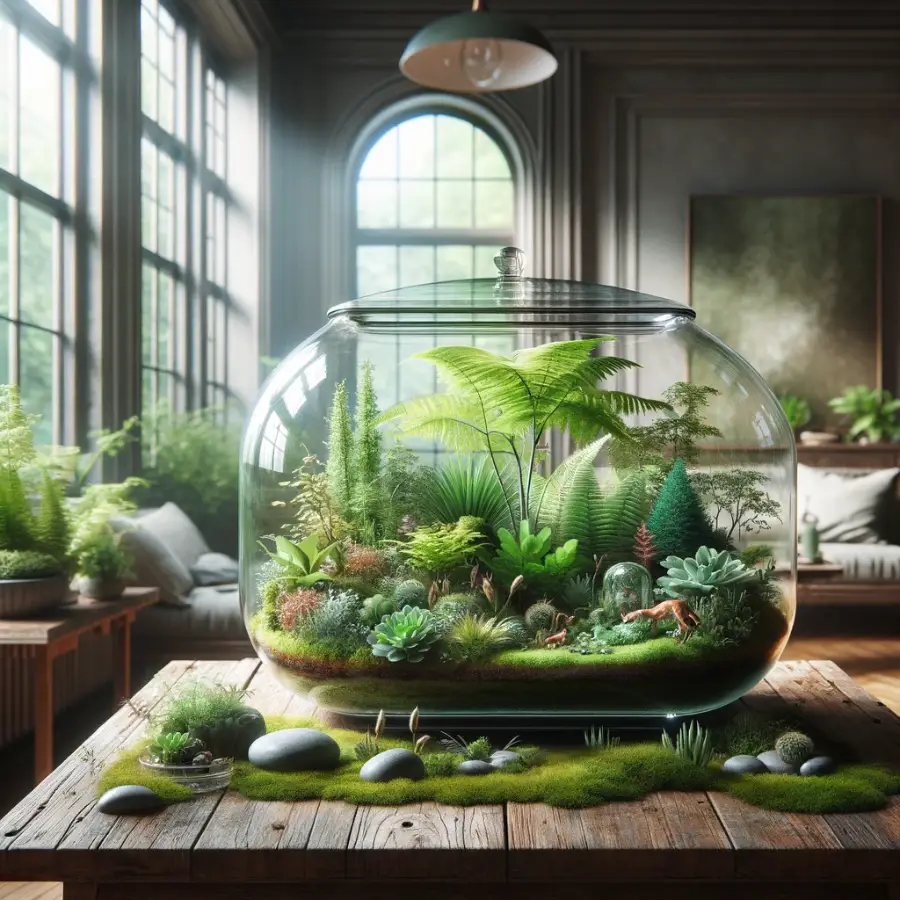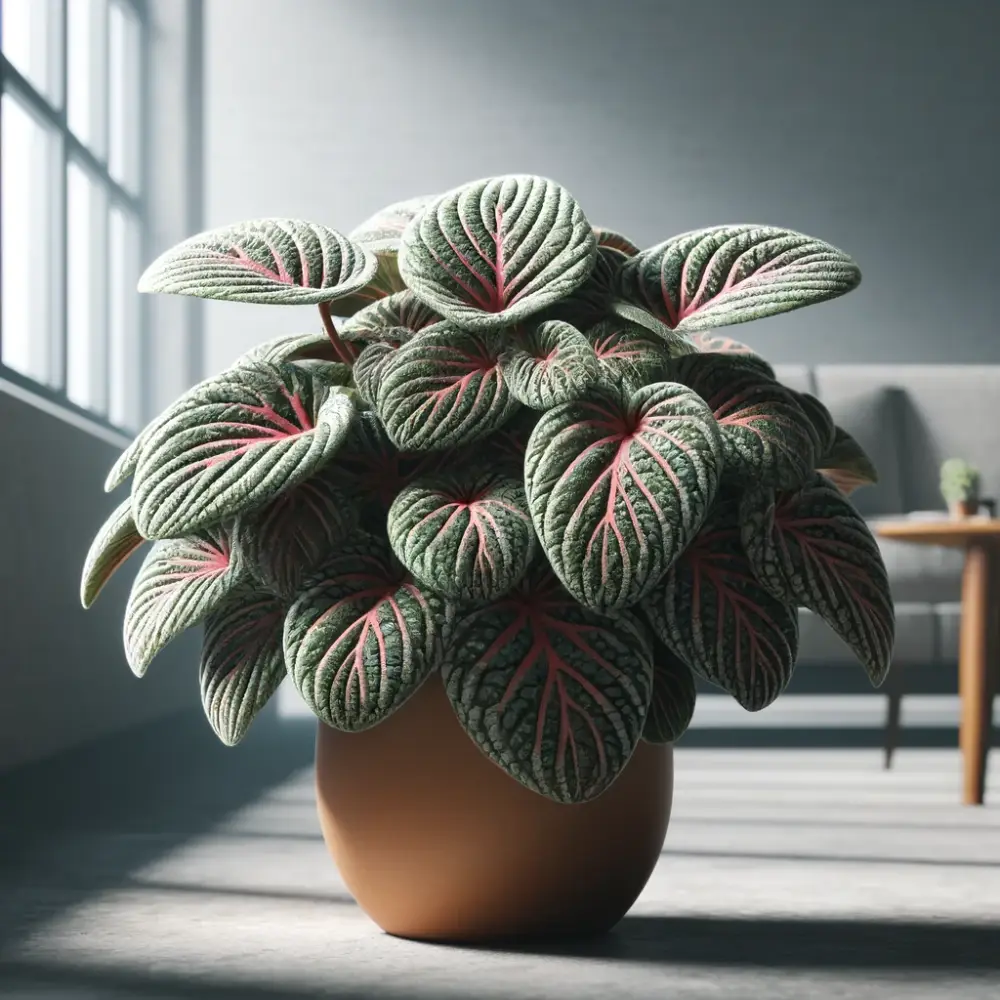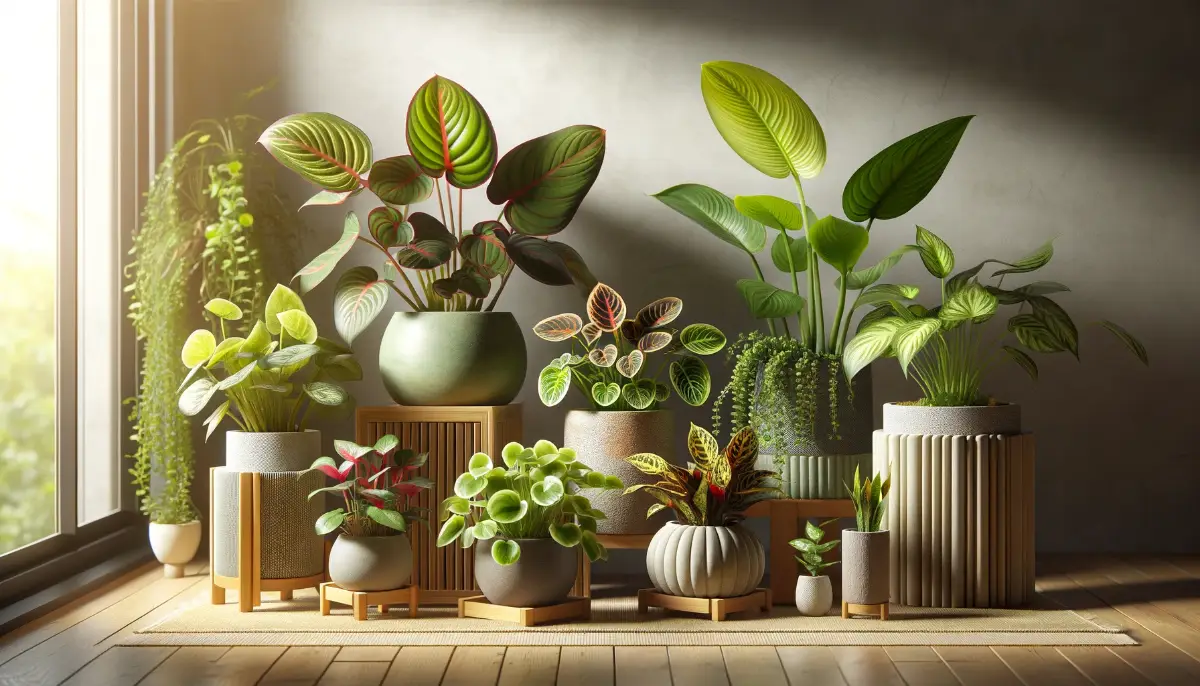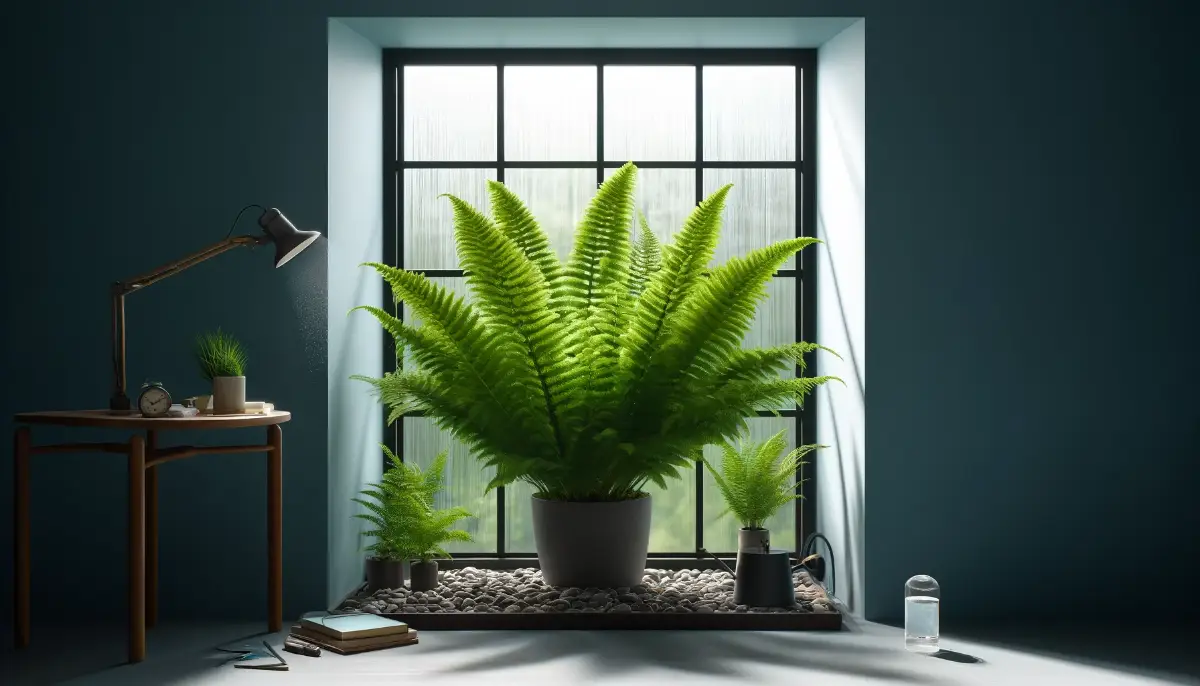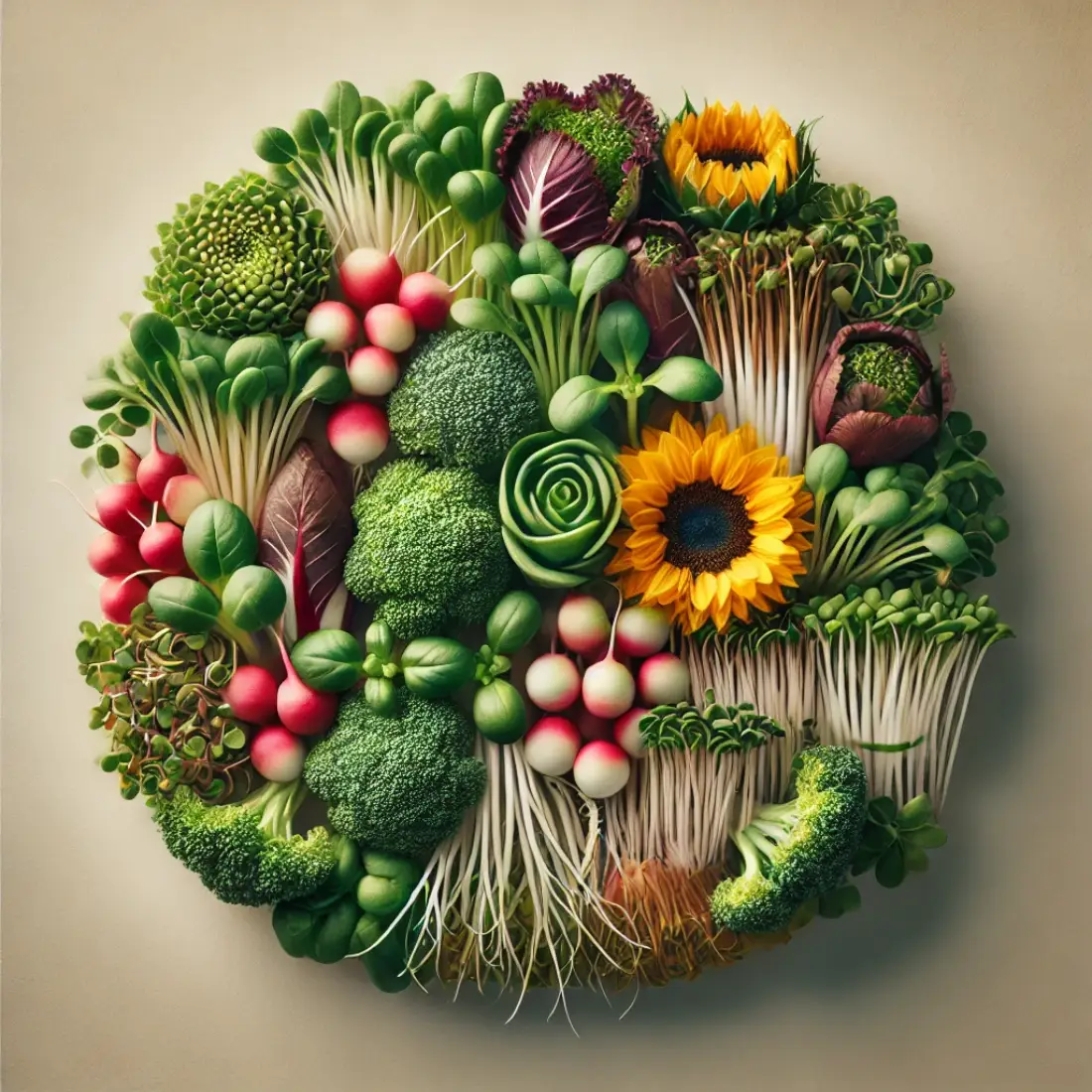Terrariums are miniature gardens in glass containers, creating beautiful, low-maintenance indoor ecosystems. These compact setups are perfect for adding a touch of nature to any space.
Choosing the right plants is essential for a thriving terrarium.From moisture-loving ferns to colorful foliage plants, discover the perfect flora to create your own green oasis. Let’s dive into the top 10 plants ideal for terrariums and learn how to care for them.
- Terrariums are perfect for creating miniature, low-maintenance indoor gardens.
- Selecting the right plants is essential for a thriving terrarium.
- Fittonia, Pilea, and Peperomia are excellent choices for their vibrant foliage and adaptability.
- Selaginella, Ficus pumila, and Nephrolepis exaltata offer unique textures and greenery.
- Cryptanthus, Hemigraphis alternata, Hypoestes phyllostachya, and Soleirolia soleirolii add color and interest.
- Proper care includes correct watering, humidity management, and occasional pruning.
- Ideal for small spaces, terrariums bring nature indoors effortlessly.
Benefits of Growing Plants in Terrariums
Terrariums are visually appealing, bringing a touch of nature indoors. Their enclosed design requires minimal maintenance, making them perfect for busy individuals or gardening beginners. The self-contained environment maintains humidity, reducing the need for frequent watering.
Terrariums save space, ideal for small apartments or offices. They also improve indoor air quality by reducing pollutants and increasing oxygen levels. Additionally, they offer educational value, showcasing plant biology and ecosystems.
Customizable and versatile, terrariums can be tailored to various themes and styles, from tropical jungles to desert landscapes, allowing for endless creativity.
Top 10 Plants for Terrariums
Terrariums are an excellent way to enjoy indoor gardening with minimal maintenance. Selecting the right plants is crucial for creating a thriving, visually appealing terrarium. Here are the top 10 plants that are perfect for terrariums:
1. Fittonia (Nerve Plant)
Fittonia, also known as the nerve plant, is popular for its vibrant, veined leaves. It thrives in high humidity and low light, making it perfect for closed terrariums. Fittonia requires consistently moist soil but not soggy. Its striking foliage, available in red, pink, and white, adds a splash of color to any terrarium.
2. Pilea (Aluminum Plant)
Pilea, or aluminum plant, is admired for its metallic-silver patterned leaves. It grows well in moderate light and prefers slightly moist soil. Pilea is ideal for open terrariums and adds a unique texture with its distinct foliage. It’s easy to care for and brings a touch of elegance to your mini garden.
3. Peperomia
Peperomia is a diverse genus with numerous species suitable for terrariums. Its compact growth and low maintenance make it a favorite. Peperomia thrives in moderate light and prefers slightly dry conditions between watering. Its small, succulent-like leaves come in various shapes and colors, adding variety to your terrarium.
4. Selaginella (Club Moss)
Selaginella, commonly known as club moss, is perfect for creating a lush, green carpet in your terrarium. It requires high humidity and indirect light. Selaginella thrives in consistently moist soil and adds a rich, green texture to your terrarium. Its delicate, fern-like appearance makes it a beautiful ground cover.
5. Ficus pumila (Creeping Fig)
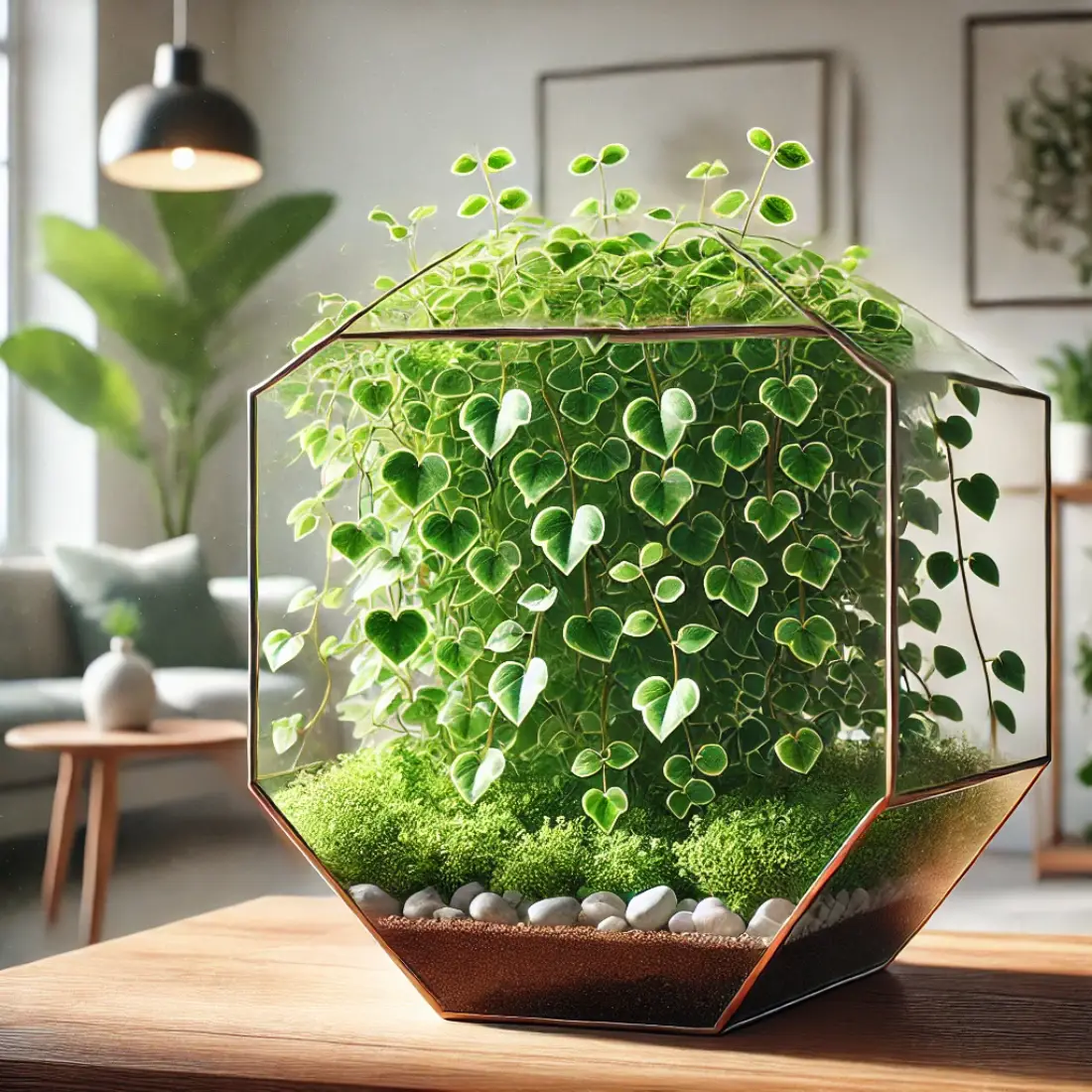
Ficus pumila, or creeping fig, is a vining plant that adds vertical interest to terrariums. It prefers bright, indirect light and slightly moist soil. Creeping fig can quickly cover surfaces with its small, heart-shaped leaves, making it perfect for creating a dense, green backdrop in your terrarium.
6. Nephrolepis exaltata (Boston Fern)
The Boston fern is a classic choice for terrariums, known for its feathery, arching fronds. It thrives in high humidity and indirect light. Boston ferns prefer consistently moist soil and can grow quite lush in a terrarium environment. Their elegant fronds add a soft, textured look to your mini garden.
7. Cryptanthus (Earth Star)
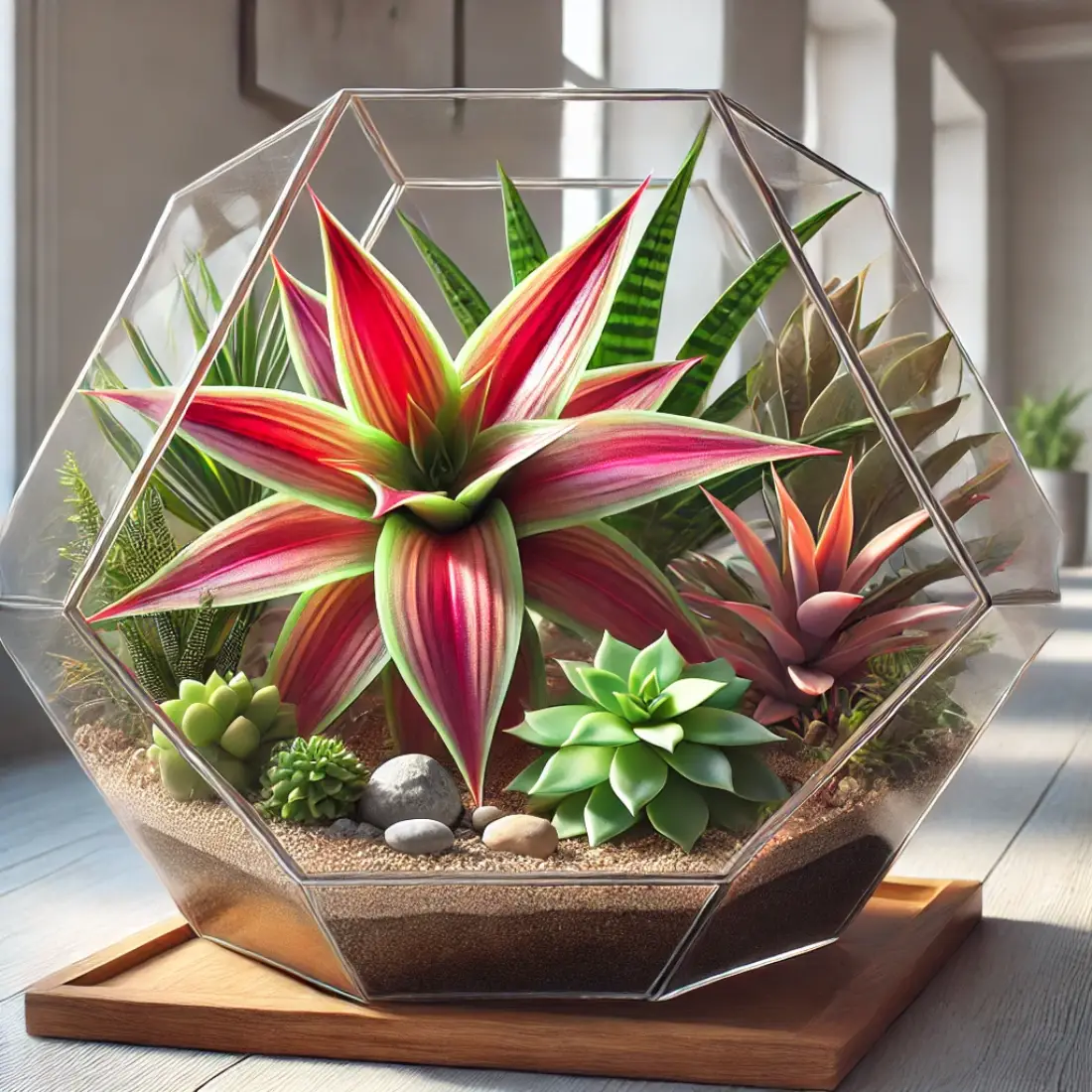
Cryptanthus, also known as earth star, is a striking plant with star-shaped, colorful foliage. It prefers bright, indirect light and slightly moist soil. Earth stars are ideal for adding a pop of color to your terrarium, with leaves ranging from pink to red to green. Their unique shape and vibrant hues make them a standout choice.
8. Hemigraphis alternata (Red Ivy)
Red ivy is known for its striking, deep purple leaves with metallic sheen. It thrives in high humidity and moderate light, making it suitable for closed terrariums. Red ivy prefers consistently moist soil and adds a dramatic touch to any terrarium with its bold foliage color.
9. Hypoestes phyllostachya (Polka Dot Plant)
The polka dot plant is loved for its speckled leaves in shades of pink, white, and red. It thrives in bright, indirect light and prefers slightly moist soil. Polka dot plants are excellent for adding color and interest to terrariums. Their vibrant, spotted foliage makes them a playful addition to any terrarium setup.
10. Soleirolia soleirolii (Baby’s Tears)
Baby’s tears is a low-growing plant with tiny, round leaves that form a dense mat. It thrives in high humidity and low to moderate light. Baby’s tears prefer consistently moist soil and are perfect for creating a lush ground cover in your terrarium. Its delicate foliage adds a soft, green carpet that enhances the overall look of your mini garden.
Plant Care Tips
To ensure your terrarium plants thrive, follow these essential care tips:
- Watering: Keep the soil consistently moist but not waterlogged. Adjust watering frequency based on the plant’s needs and the type of terrarium (open or closed).
- Lighting: Provide the appropriate light levels for each plant. Most terrarium plants prefer indirect light. Avoid direct sunlight, which can cause overheating and damage the plants.
- Humidity: Maintain high humidity levels, especially for closed terrariums. Mist the plants regularly to increase humidity if necessary.
- Pruning: Trim dead or overgrown leaves to keep plants healthy and maintain the desired shape. Regular pruning prevents overcrowding and promotes better air circulation.
- Cleaning: Keep the terrarium clean by removing any fallen leaves or debris. This helps prevent mold and pests.
Setting Up Your Terrarium
- Choose a Container: Select a glass container that suits your style and space. Ensure it has a lid for closed terrariums or an open top for open terrariums.
- Layering: Start with a layer of small stones for drainage, followed by activated charcoal to keep the environment fresh. Add a layer of sphagnum moss to prevent soil from settling into the drainage layer.
- Soil: Use a well-draining potting mix suitable for your chosen plants. Fill the container with soil, leaving enough space for the plants.
- Planting: Arrange your plants, starting with the largest and filling in gaps with smaller plants. Gently press the soil around the roots to secure them in place.
- Watering: Lightly water the soil to settle the plants. Be cautious not to overwater, as terrariums have limited drainage.
- Placement: Place your terrarium in a location with appropriate light levels. Avoid direct sunlight to prevent overheating.
FAQs about Terrariums
Can I use any plant for a terrarium?
Not all plants are suitable for terrariums. Ideal plants are those that thrive in high humidity and low to moderate light conditions. The top 10 plants listed in this guide are all excellent choices for terrariums due to their adaptability and care requirements.
How often should I water my terrarium?
The watering frequency depends on the type of terrarium and the plants within it. Closed terrariums need less frequent watering, possibly every few weeks, as they retain moisture. Open terrariums may require weekly watering. Always ensure the soil is moist but not soggy.
Do terrariums need fertilizer?
Terrariums generally don’t need frequent fertilization. If you choose to fertilize, use a diluted, balanced liquid fertilizer once or twice a year. Over-fertilization can lead to excessive growth and potentially harm the plants.
Can I keep a terrarium in low light?
Many terrarium plants thrive in low to moderate light conditions. However, they still need some indirect light to grow. Place your terrarium near a window with filtered light or use artificial grow lights if natural light is insufficient.
How do I prevent mold in my terrarium?
To prevent mold, avoid overwatering and ensure proper air circulation. Keep your terrarium clean by removing dead leaves and debris promptly. You can also add a small fan or open the lid occasionally to improve airflow.
What do I do if my terrarium plants outgrow the container?
If your plants outgrow the terrarium, trim back the excess growth. Pruning helps maintain the desired shape and size of the plants. For severely overgrown plants, consider transplanting them to a larger container or creating a new terrarium.
Can I mix succulents and tropical plants in the same terrarium?
Mixing succulents and tropical plants is not recommended. Succulents require dry, well-draining soil and low humidity, while tropical plants need moist soil and high humidity. It’s best to create separate terrariums for each type to meet their specific needs.
How do I clean my terrarium?
To clean your terrarium, gently remove the plants and set them aside. Wipe the inside of the glass with a damp cloth to remove dirt and algae. Clean the decorative elements and refresh the soil if necessary. Replant your plants carefully after cleaning.
Can I use tap water for my terrarium?
It’s best to use distilled or rainwater for terrariums. Tap water can contain minerals and chemicals that may harm the plants over time. If you must use tap water, let it sit out for 24 hours to allow chlorine to evaporate before using it.
How can I increase humidity in my terrarium?
To increase humidity, mist the plants regularly with a spray bottle. You can also partially cover the terrarium with a lid or plastic wrap to retain moisture. Adding a layer of sphagnum moss on top of the soil can help maintain humidity levels.

